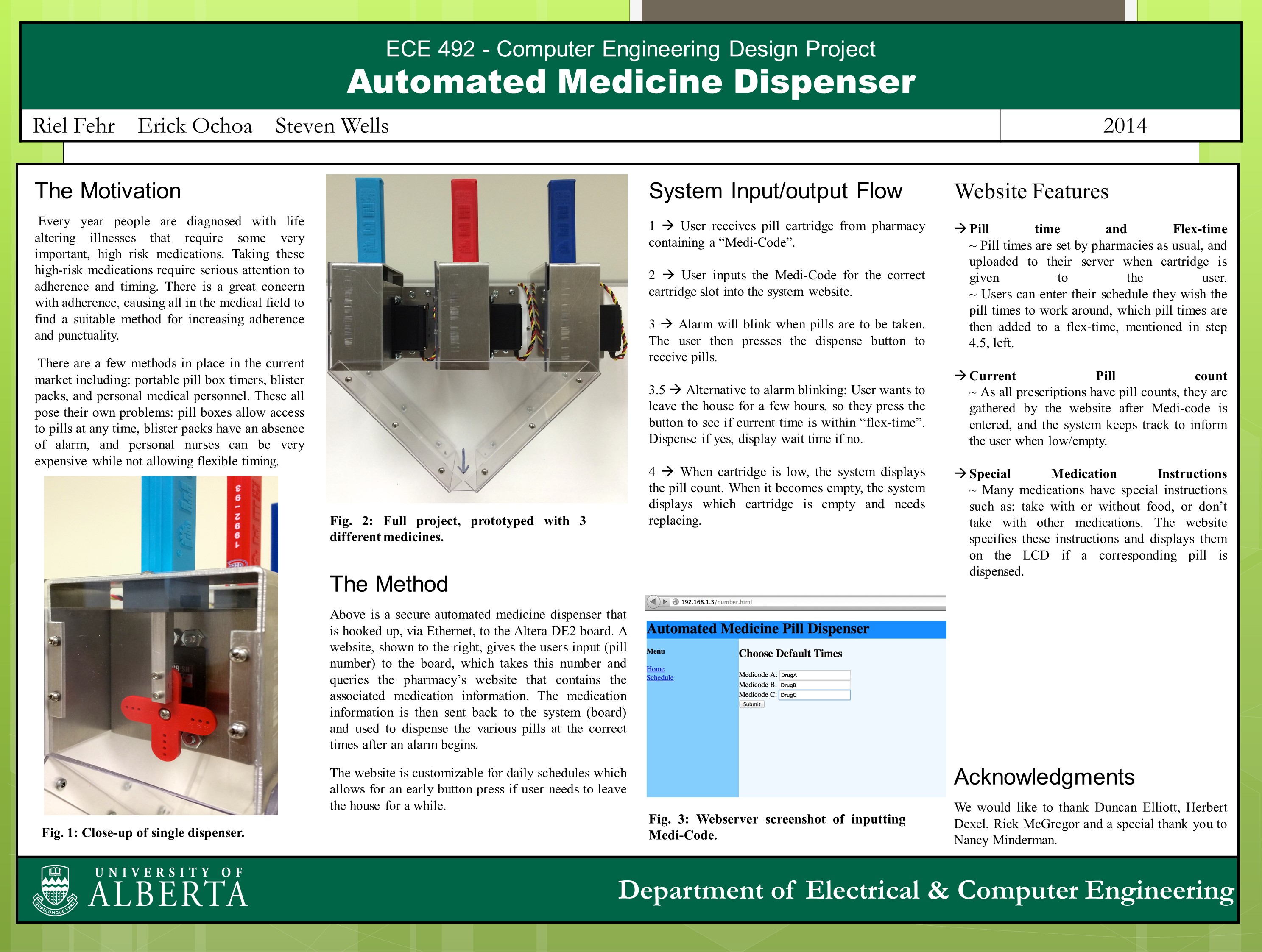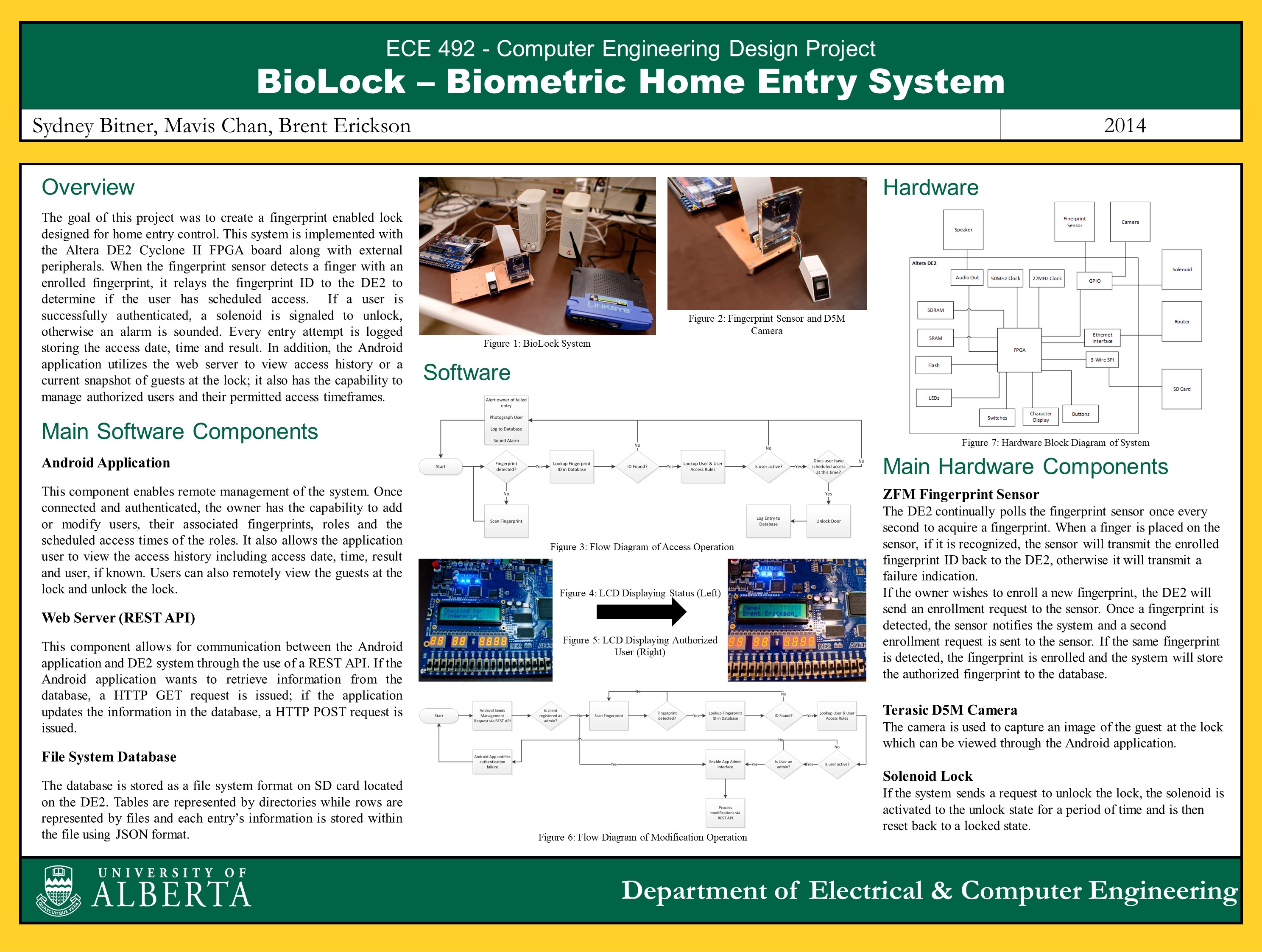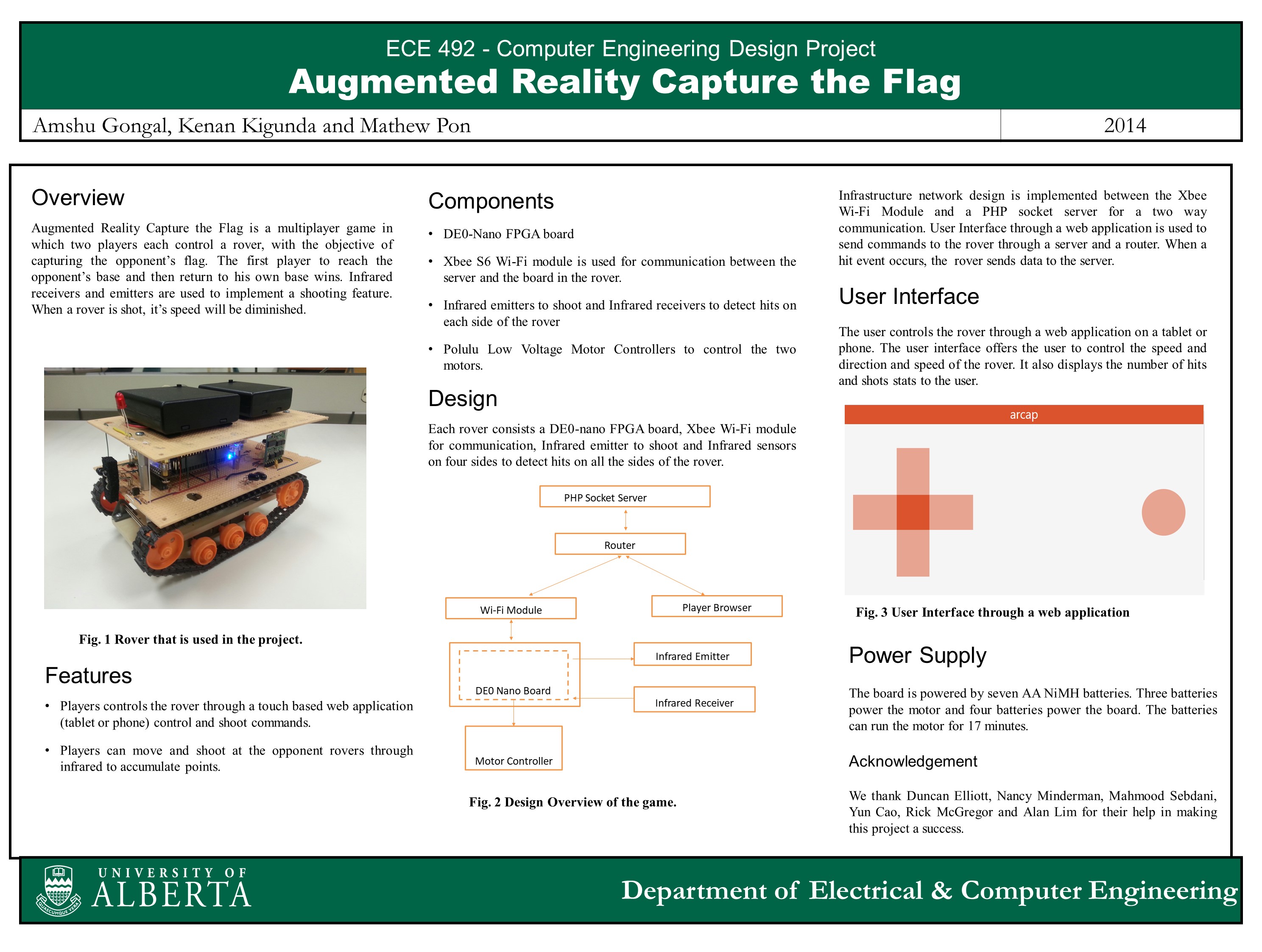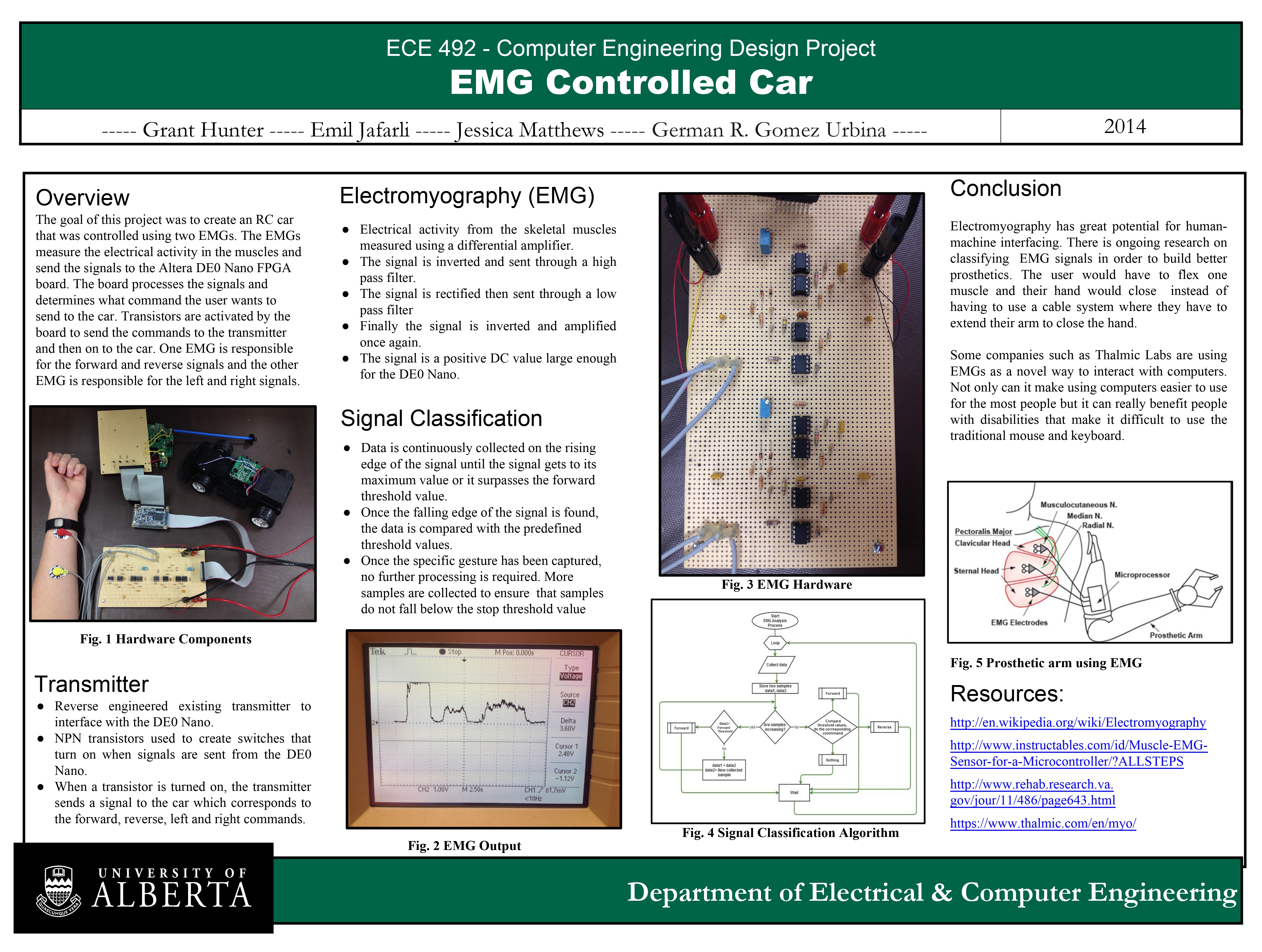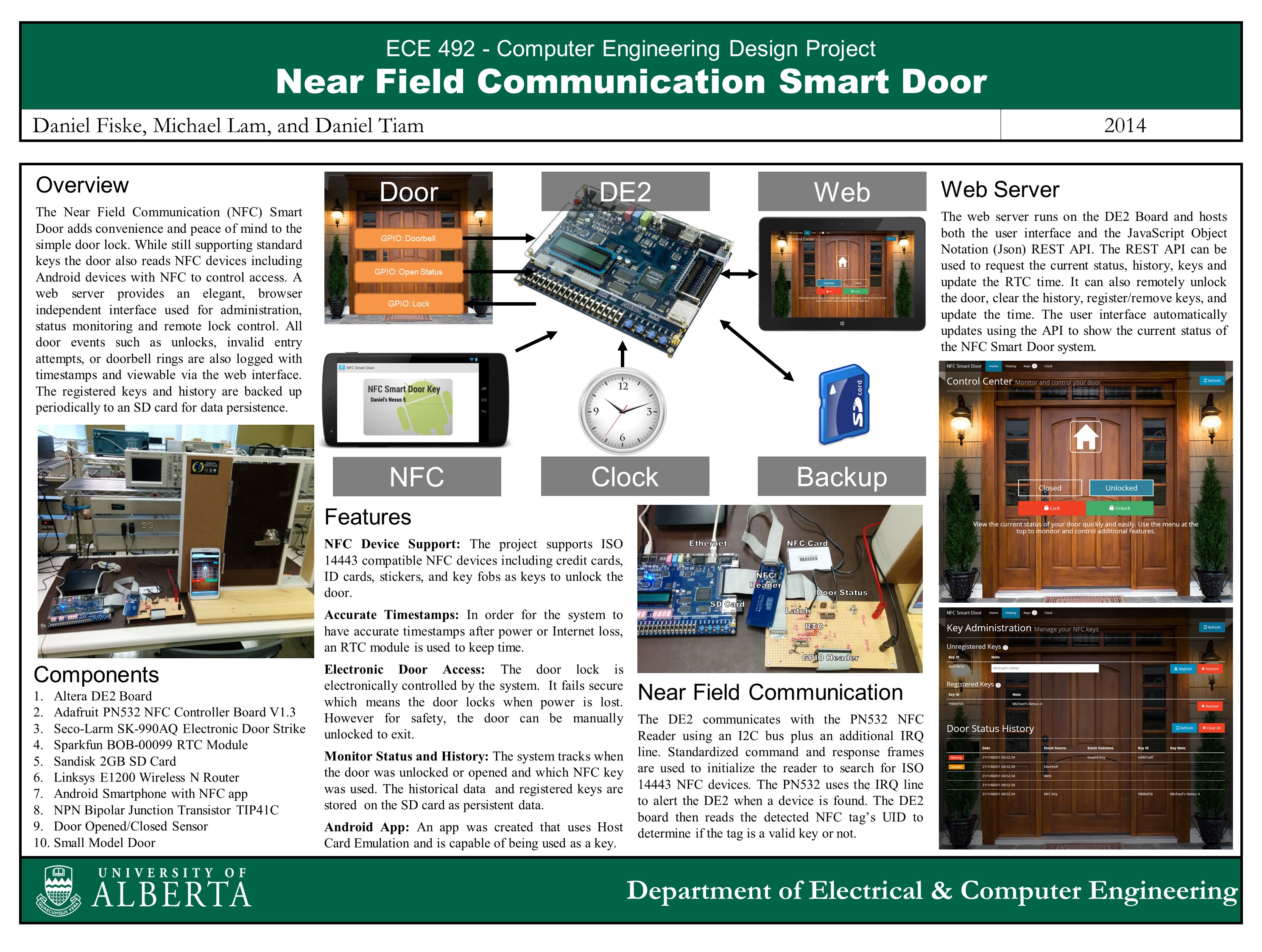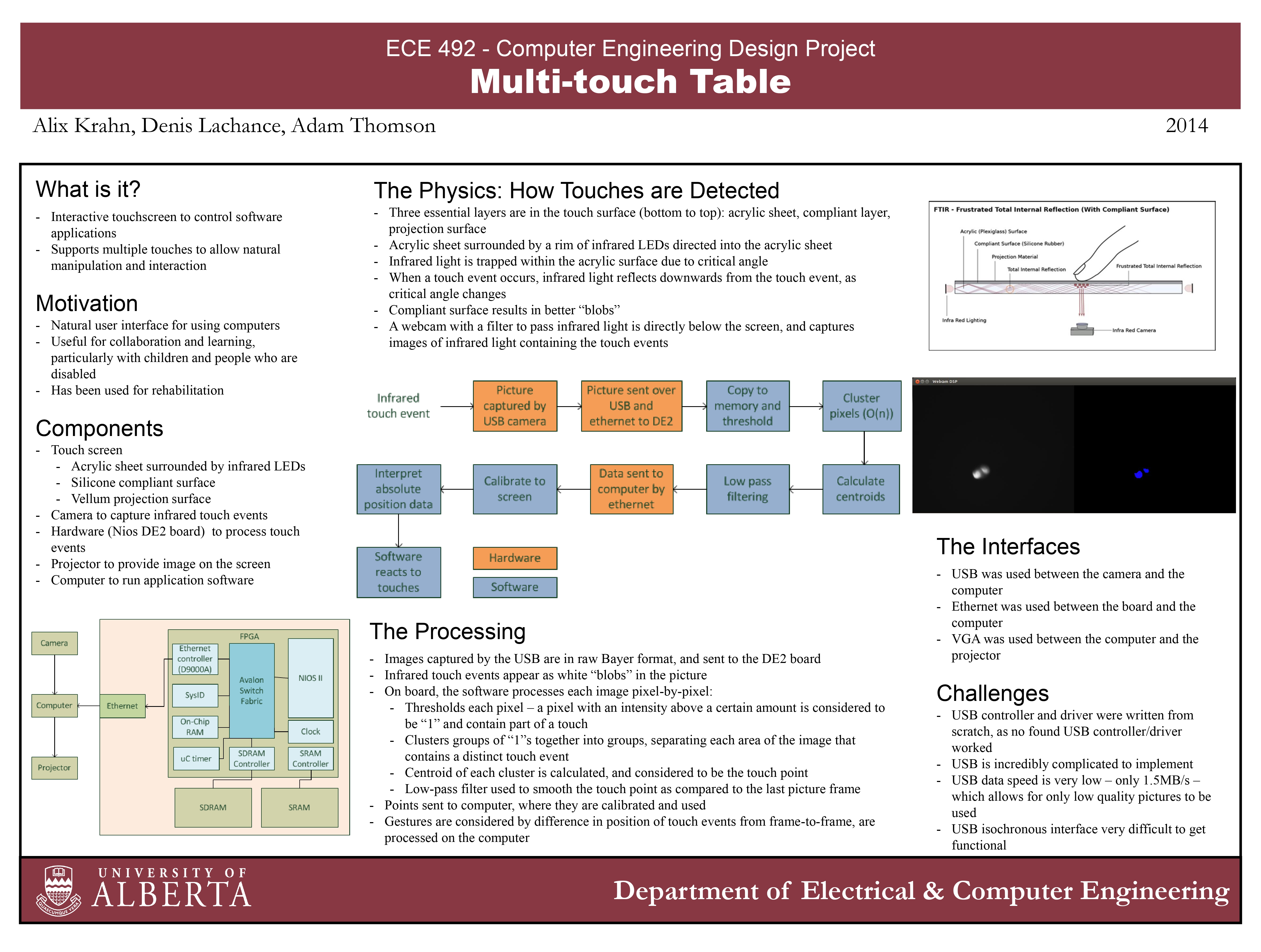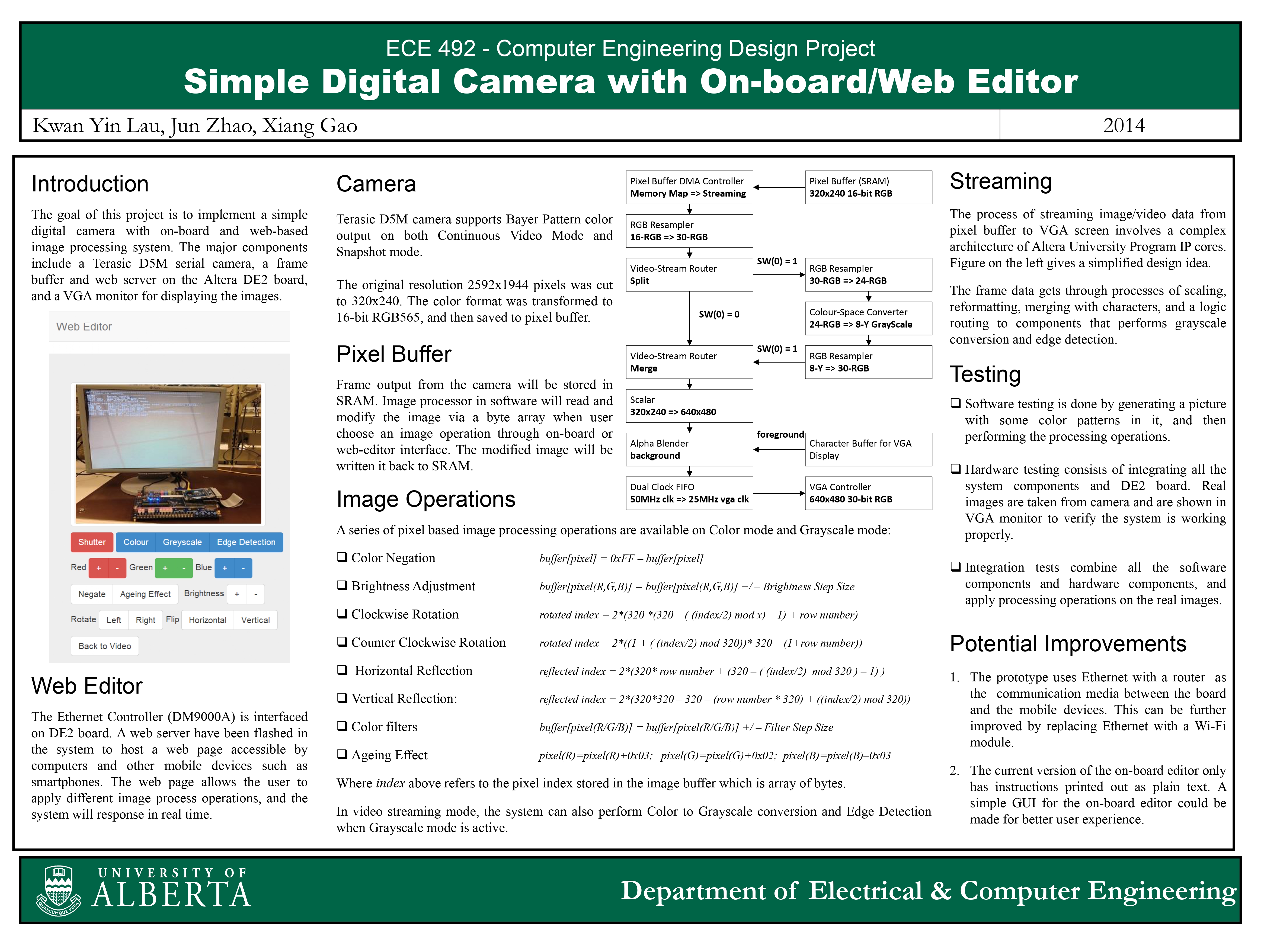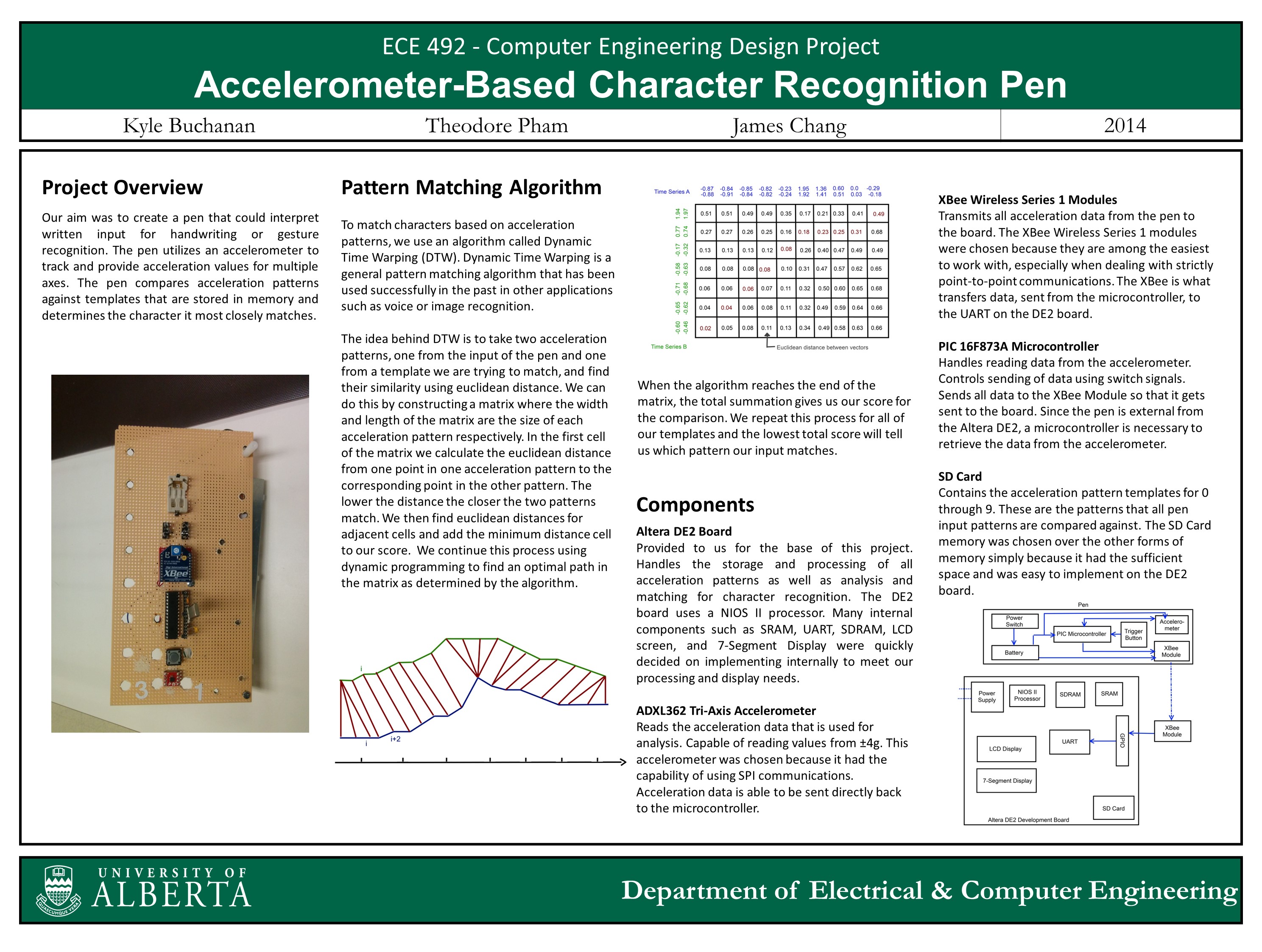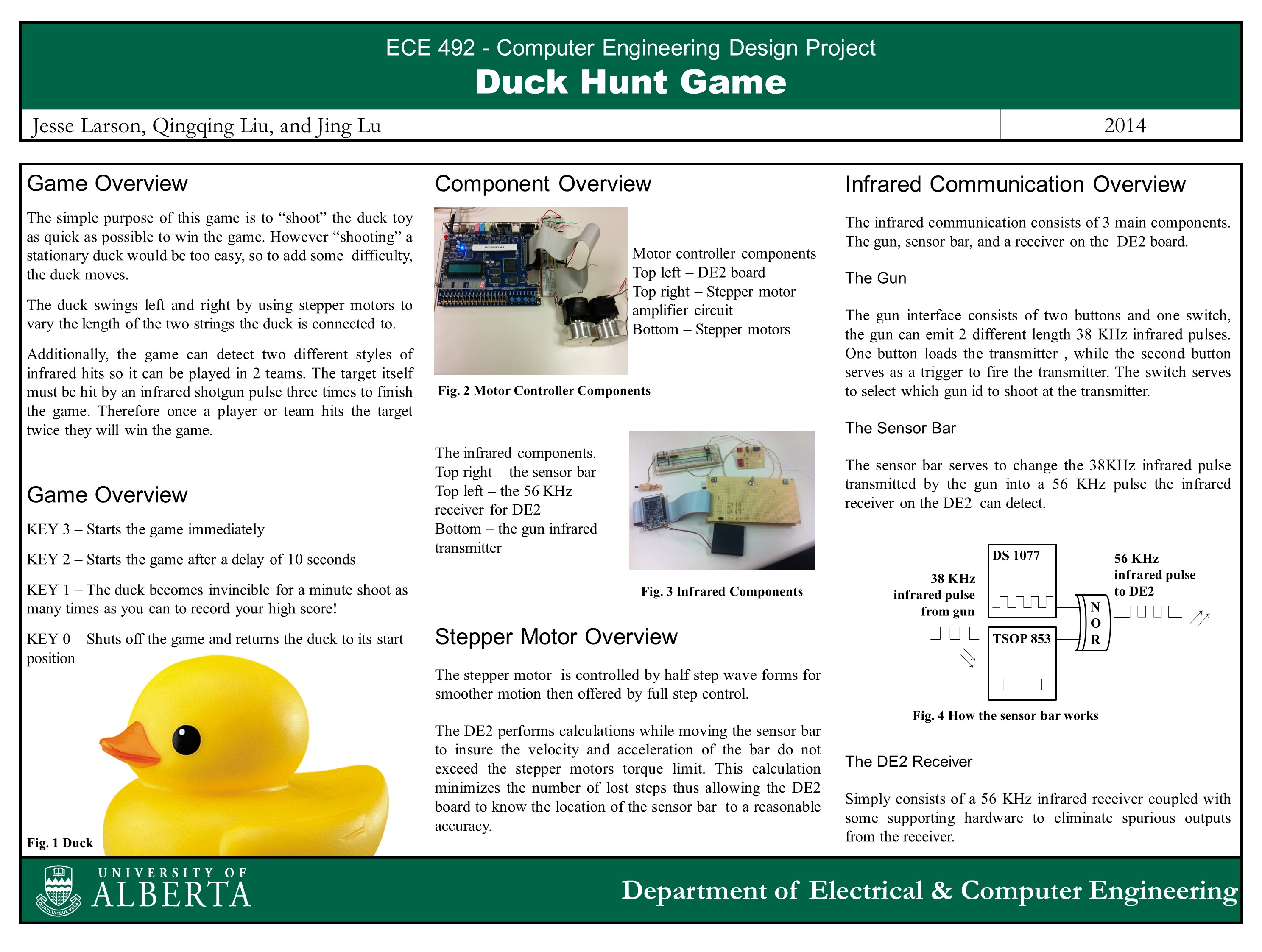Team Members: Mike Pappas, Nigel Himmelreich, Eric Anderson
Inspired by a disposable “smart bandage” concept for monitoring the healing progress of a wound, the NFC Sensor System is a proof of concept that a small, ultra-low powered device can wirelessly transmit sensor data to a host device. Using the Texas Instruments MSP430, the system is able to read temperature and light data and transmit the values to the Altera DE0 where they can be packaged and sent to the host Android device for viewing and logging.
Discipline:Computer Engineering
Team Members: Riel Fehr, Erick Ochoa, Steven Wells
Every year people are diagnosed with life altering illnesses that require some very important, high risk medications. Taking these high-risk medications require serious attention to adherence and timing. There is a great concern with adherence, causing all in the medical field to find a suitable method for increasing adherence and punctuality. There are a few methods in place in the current market including: portable pill box timers, blister packs, and personal medical personnel. These all pose their own problems: pill boxes allow access to pills at any time, blister packs have an absence of alarm, and personal nurses can be very expensive while not allowing flexible timing
Discipline:Computer Engineering
Team Members: Sydney Bitner, Mavis Chan, Brent Erickson
The goal of this project was to create a fingerprint enabled lock designed for home entry control. This system is implemented with the Altera DE2 Cyclone II FPGA board along with external peripherals. When the fingerprint sensor detects a finger with an enrolled fingerprint, it relays the fingerprint ID to the DE2 to determine if the user has scheduled access. If a user is successfully authenticated, a solenoid is signaled to unlock, otherwise an alarm is sounded. Every entry attempt is logged storing the access date, time and result. In addition, the Android application utilizes the web server to view access history or a current snapshot of guests at the lock; it also has the capability to manage authorized users and their permitted access timeframes.
Discipline:Computer Engineering
Team Members: Amshu Gongal, Kenan Kigunda and Mathew Pon
Augmented Reality Capture the Flag is a multiplayer game in which two players each control a rover, with the objective of capturing the opponent’s flag. The first player to reach the opponent’s base and then return to his own base wins. Infrared receivers and emitters are used to implement a shooting feature. When a rover is shot, it’s speed will be diminished.
Discipline:Computer Engineering
Team Members: Grant Hunter, Emil Jafarli, Jessica Matthews, German R. Gomez Urbina
The goal of this project was to create an RC car that was controlled using two EMGs. The EMGs measure the electrical activity in the muscles and send the signals to the Altera DE0 Nano FPGA board. The board processes the signals and determines what command the user wants to send to the car. Transistors are activated by the board to send the commands to the transmitter and then on to the car. One EMG is responsible for the forward and reverse signals and the other EMG is responsible for the left and right signals
Discipline:Computer Engineering
Team Members: Daniel Fiske, Michael Lam, and Daniel Tiam
The Near Field Communication (NFC) Smart Door adds convenience and peace of mind to the simple door lock. While still supporting standard keys the door also reads NFC devices including Android devices with NFC to control access. A web server provides an elegant, browser independent interface used for administration, status monitoring and remote lock control. All door events such as unlocks, invalid entry attempts, or doorbell rings are also logged with timestamps and viewable via the web interface. The registered keys and history are backed up periodically to an SD card for data persistence.
Discipline:Computer Engineering
Team Members: Alix Krahn, Denis Lachance, Adam Thomson
Interactive touchscreen to control software applications that supports multiple touches to allow natural manipulation and interaction.
Discipline:Computer Engineering
Team Members: Kwan Yin Lau, Jun Zhao, Xiang Gao
The goal of this project is to implement a simple digital camera with on-board and web-based image processing system. The major components include a Terasic D5M serial camera, a frame buffer and web server on the Altera DE2 board, and a VGA monitor for displaying the images.
Discipline:Computer Engineering
Team Members: Kyle Buchanan, Theodore Pham, James Chang
Our aim was to create a pen that could interpret written input for handwriting or gesture recognition. The pen utilizes an accelerometer to track and provide acceleration values for multiple axes. The pen compares acceleration patterns against templates that are stored in memory and determines the character it most closely matches
Discipline:Computer Engineering
Team Members: Jesse Larson, Qingqing Liu, Jing Lu
The simple purpose of this game is to “shoot” the duck toy as quick as possible to win the game. However “shooting” a stationary duck would be too easy, so to add some difficulty, the duck moves. The duck swings left and right by using stepper motors to vary the length of the two strings the duck is connected to. Additionally, the game can detect two different styles of infrared hits so it can be played in 2 teams. The target itself must be hit by an infrared shotgun pulse three times to finish the game. Therefore once a player or team hits the target twice they will win the game.
Discipline:Computer Engineering
Explore
Explore projects from other disciplines!

